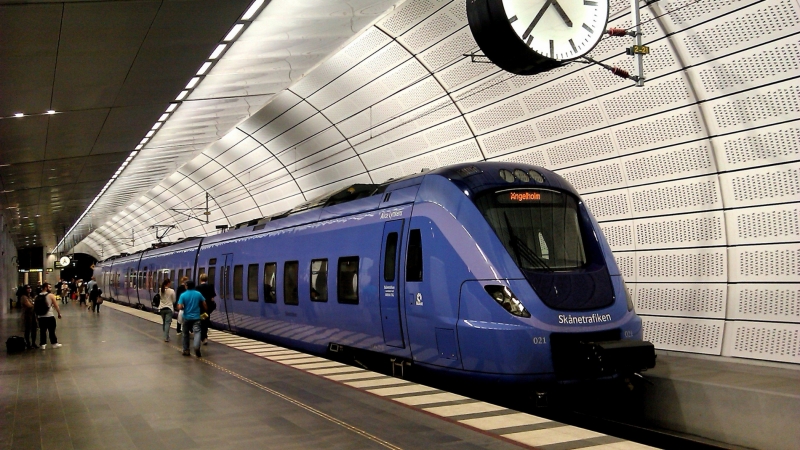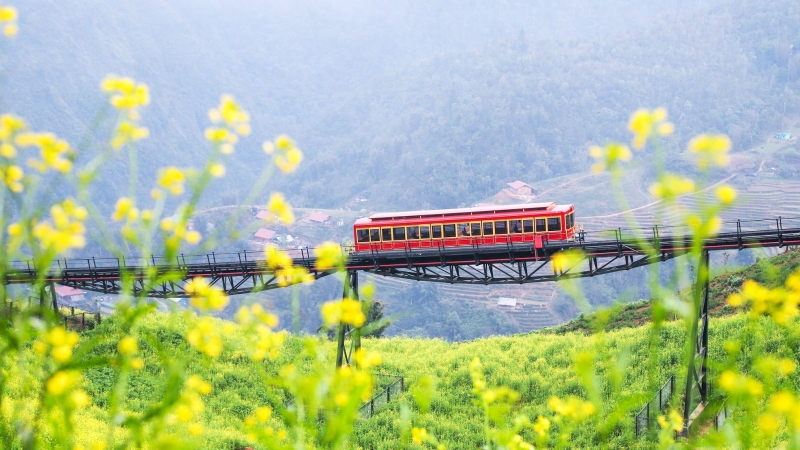With a total length of 213 km, about 1.4 billion people use the metro network built over a century ago every year. Since the beginning of the 20th century, the metro has been a very popular means of transport, associated with the working class of Paris, helping them to get to their factories or workshops, which are mainly concentrated in the city. By the early 1970s, the metro had become associated with a fast and boring pace of life, with the slogan still popular today: “métro, boulot, dodo” (metro, work, sleep).
Métro System - Witness of history, the soul of Paris
The Paris Métropolitain system of the Paris Public Transport Management Company (Régie autonome des transports parisiens-RATP) was officially put into use on July 19, 1900 and has been developing until today. Associated with the lives of those who have been coming to Paris for more than a century, it is undeniable that the Paris Métro system is a typical cultural feature of France and one of the iconic works of the world's city of light.

The system carried 1.498 billion passengers in 2019, or about 4.1 million passengers per day, making it the most used public transport system in Paris.
In 1863, the world's first metro line opened in London. Three years later, New York was the next city to use the metro, followed by Chicago in 1892 and Budapest in 1896.
After many years of debate between the State and the Paris city government, in 1895, the Breton bridge engineer Fulgence Bienvenüe was responsible for starting the Métro project in the French capital. Paris would have a complete inner-city transport system in preparation for the Universal Exhibition of 1900 and would be extended by 6 more lines in 1911. Therefore, the Métro is one of the most important projects marking the milestone of the modern era of Paris.
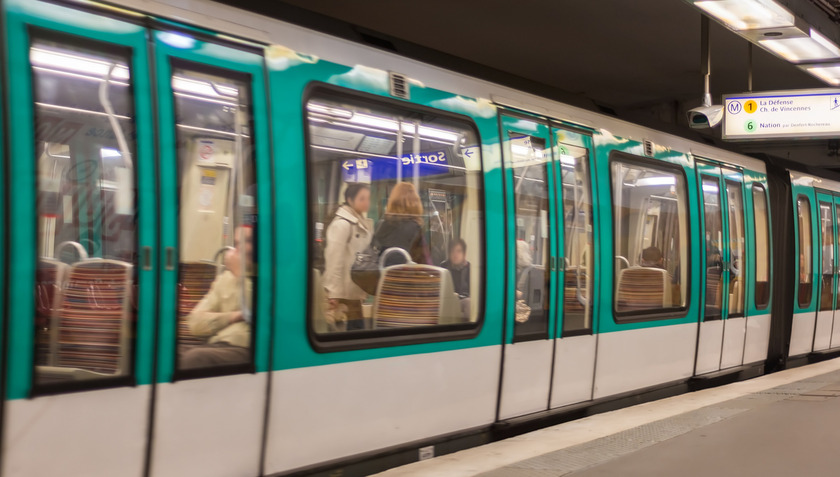
Métro is the abbreviation of the company that originally operated most of the network: Compagnie du chemin de fer métropolitain de Paris SA ("Paris Metropolitan Railway Company")
The Paris Metro system today has a total of 16 lines, arranged in order from 1-16 with a total length of 214 km of track, with a minimum of 4.5 million passengers per day, and about 1.4 billion users per year.
Metro tickets were introduced as soon as Line 1 opened. 30,000 tickets were sold on the first day of use at 15 cents each for a second-class ticket. In 1900 alone, 17 million passengers traveled the line. Before the automatic ticket checking system was introduced in 1973, there was always a ticket inspector standing at the entrance to the metro to punch tickets.
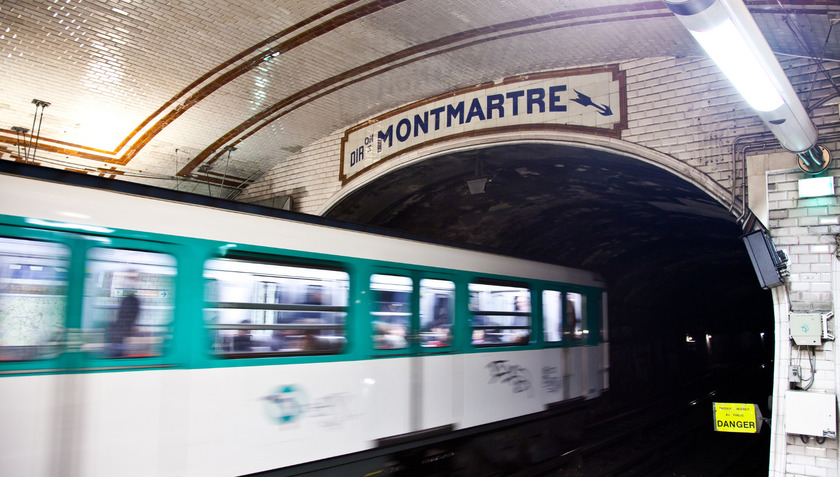
In 1845, Paris and the railway companies conceived of an urban railway system to connect the inner districts of the city.

French rail companies and the government want to extend the main rail line into a new underground network, while Parisians favor a new, independent network.
Due to the heterogeneous geology of Paris, the Metro lines are often located quite close to the ground, with an average depth of 4 to 12 meters. Except for the underground lines under the hills of Paris such as Montmartre, Ménilmontant, some stations are up to 32 meters deep, such as under Chaumont Hill (Buttes Chaumont), in the 19th arrondissement, north of Paris. This is the reason why the Paris Metro lines have to be built along the main roads, making some lines run quite windingly.
To ensure the most convenient travel for Parisians, the Paris Metro in the inner city has stops very close together. The average distance between two stops is 548 m, line 13 is 325 m, and line 14 is 1 km, all forming a grid-like network closely arranged under the city.
Paris Metro and impressive stops recreate the culture and history of the city of light
In 1968, André Malraux, a writer and politician in charge of the government's cultural sector, came up with the idea of a "cultural pier". The Métro stations were then renovated, no longer just ordinary stations, but also places to recreate the history and culture of Paris and France.
Inspired by the Museum of Arts and Crafts, the Arts et Métiers station on line 11 is an architectural masterpiece. Stepping into the station is like stepping into another world where technology and art blend. With its polished copper panels and impressive Nautilus submarine models, the station offers a truly unique experience. This combination transforms the station into a veritable underground art museum.
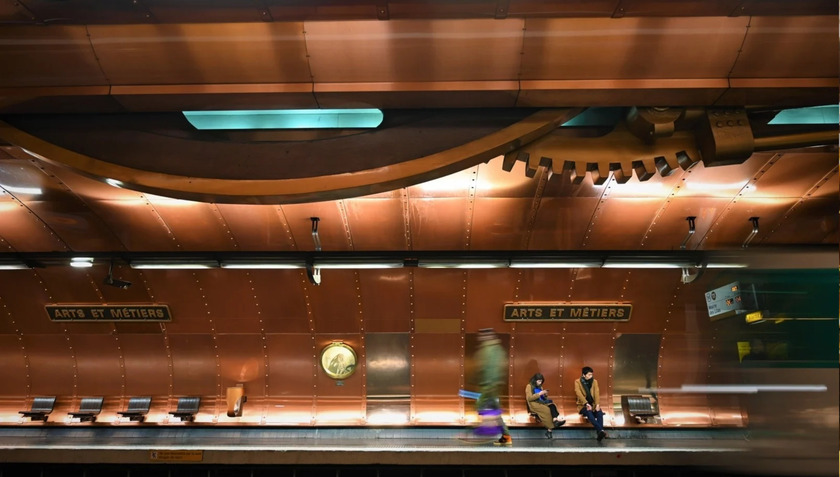
The embankment of station number 11 is arguably the most unique metro station in Paris.
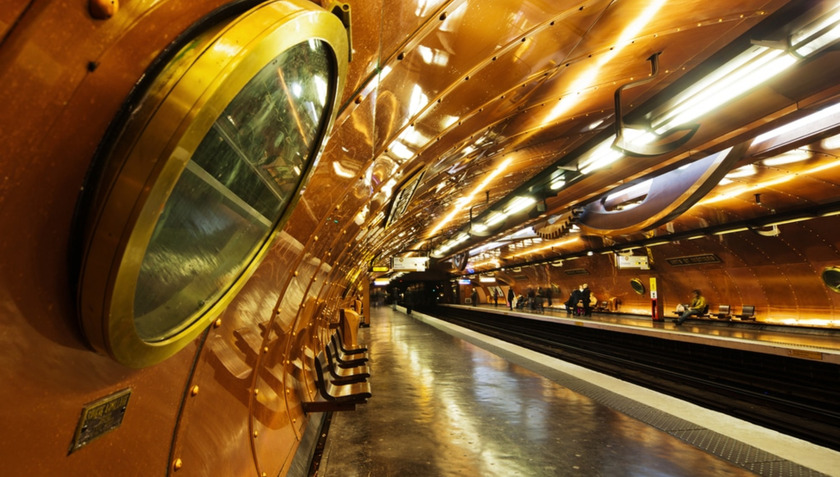
Round windows like on a ship, walls covered with copper plates, cogwheels on the ceiling…
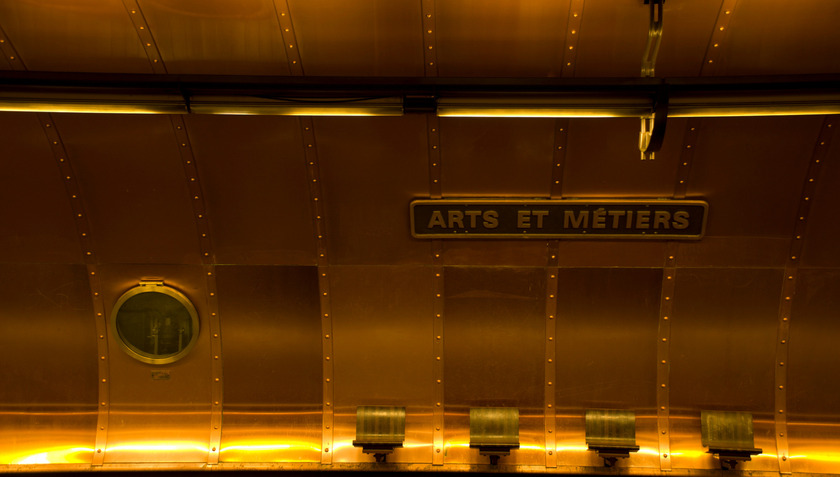
If you want to feel like you've stepped into another world in the heart of Paris, this is the metro station for you, a cross between a Jules Verne submarine and a fantastical machine from the imagination.
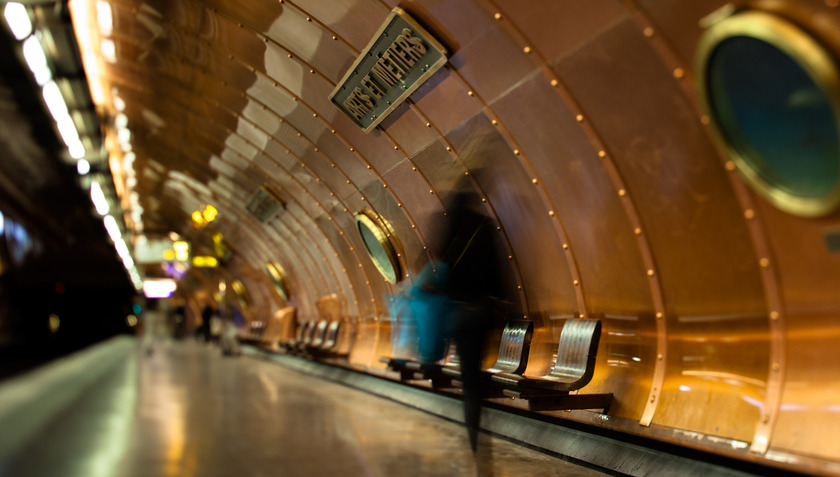
Concorde Station on Line 12 is a living history museum. The walls of the station feature the Declaration of the Rights of Man and of the Citizen, marking one of the most important milestones in French history. Each floor tile resembles a letter, together creating a unique work of art that pays homage to culture and national spirit.

Since 1991, the entire arch of Concorde Station 12th Street has been decorated with a porcelain work by artist Françoise Shein.
To celebrate the 100th anniversary of the Paris metro, artist Jean-Michel Othoniel created a unique artwork at the Palais-Royal-Musée du Louvre station. The unique artwork transformed the entrance to Colette Square into a colorful and creative space. The glass balls shimmered like precious gems, creating a small, pretty kiosk that attracted all eyes.
Just like the early period of Guimard's new art style, the above style was also the subject of debate and gossip because it broke the elegant classical style of the neighborhood with famous buildings such as the French Opera, the Constituent Assembly, the Louvre Museum or the Royal Palace...
The most beautiful view of Paris from the metro is the section between Passy and Bir-Hakeim stations on Line 6 leading to the Eiffel Tower. This is the only line that does not run entirely underground, but is mostly on high bridges. The panoramic view of the Eiffel Tower, the Pont de l'Iena in front of it and the two banks of the romantic Seine River, blend together to create a magical, idyllic picture.

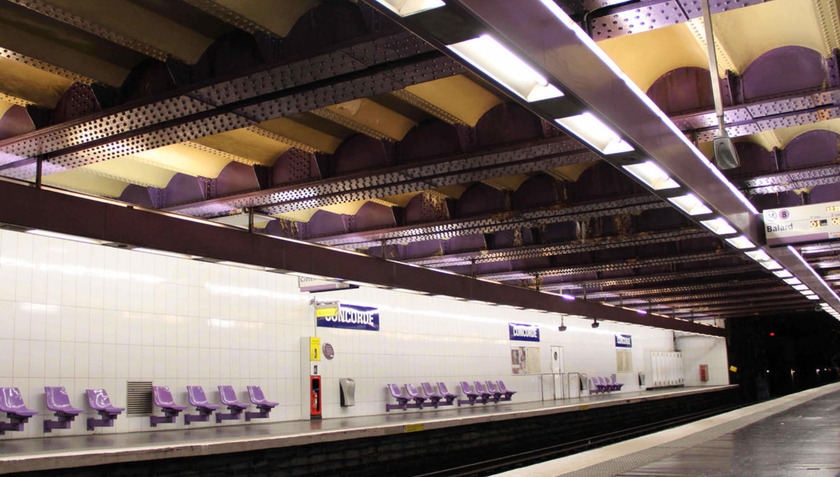
Made of blue letters on a white background, this giant sign recreates the Declaration of the Rights of Man and of the Citizen of 1789 (July 14, 1789 marked the outbreak of the French Revolution).
In addition to the most beautiful metro stations, there are still abandoned metro stations in Paris, called “ghost stations”, because they are not open to passengers. When World War II broke out, the government implemented a policy of reducing service frequency and operating only 85 stations, because a part of the staff was mobilized to fight. In the years after the war, most of them were reopened, but many stations were not used regularly, or were too close to neighboring stations so they remained inactive, while some other stations were used for other purposes or disappeared over time. There are 3 stations that have been closed permanently since 1939: Arsenal, Champ-de-Mars and Croix-Rouge.
In the near future, around 2040, the “Grand Paris Metro” project will be completed. 155 km of new railway, connecting with existing lines, will allow tens of thousands of Parisians and the surrounding areas to save a lot of travel time, and to travel further.







